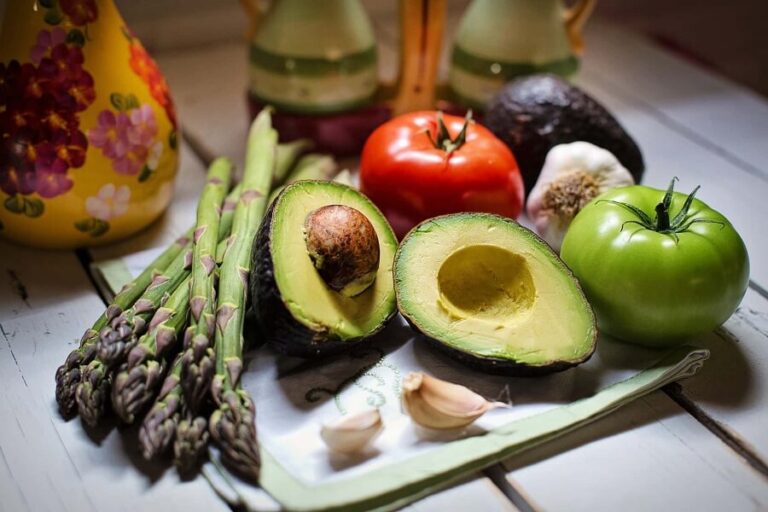During menopause, women typically gain an average of 5 to 7 kg body weight. The main reason is the hormonal changes that occur in the body. (1)
If menopause is combined with a diet high in refined carbohydrates, the results in body weight can be enhanced. That is why proper nutrition for weight loss in menopause must begin with rejecting sugar and sweets.
Also, during this stage, it is essential to regulate your estrogen and progesterone levels. These hormones go down and can cause significant changes in metabolism.
Read on to find out how to regulate your weight during menopause – What to eat to achieve an ideal weight?
RELATED:
- Effects of estrogens on the female body
- How to lose weight? – Methods that do work
- Weight and diabetes – Why diabetes can lose weight?
Menopause – How to eat to lose weight?
Weight loss strategies for women and men are very similar: reduce calories and, if possible, increase your level of physical activity.
However, at the hormonal level, there are several differences. First, low estrogen levels can cause changes in the body that are not only related to body weight.
So including foods that help the production and activation of this hormone, such as phytoestrogens and foods with fiber, is essential.
In addition, during menopause, there is a risk of thinning other tissues. Therefore, providing the correct proportion of nutrients is essential to ensure their integrity.
Here are some tips on what to eat to lose weight during menopause.
- Give up sweets
During menopause, there is an increased risk of disorders related to insulin production, such as diabetes mellitus 2. Good nutrition should start by leaving aside sugar, sweet foods, and refined flours to avoid weight gain.
- Slight calorie reduction
Controlling calories is essential to losing weight. However, nutritionists do not recommend reducing your daily caloric intake by more than 15-20%.
This is because an excess of calorie cutting can unbalance the levels of hunger hormones: leptin and ghrelin. On average, women need 2000 kcal per day, so to lose weight, the diet must contain 1600-1800 kcal.
- Check the quality of fats.
Replacing animal fats with healthy plant oils (olive oil, canola oil, coconut oil) is essential during menopause. If you also limit sunflower oil and margarine, you ensure a balance of omega-3 – omega-6 in the body and avoid the adverse effects of trans fats.
- Eat more magnesium
According to the WHO, only 25% of people get enough magnesium in their daily diet. A deficiency of this mineral in menopause can disrupt the body’s energy metabolism, which can indirectly contribute to weight gain.
- More vegetable fiber
In general, fiber foods are not only a good source of phytoestrogens but also help to activate female sex hormones. For this, doctors recommend increasing the consumption of whole grains and seeds: flax, chia, and quinoa.
- Eat more berries
Some fruits like berries are high in phytoestrogens and polyphenols content. These two compounds help regulate your hormone levels and reduce aging.
Why is it difficult for a woman to lose weight after 50?
The decrease in estrogen levels is one of the critical changes in the female body after menopause.
Low estrogen can cause changes in behavior and lead to a reduction in physical activity.
This is associated with a lower metabolic rate and, therefore and consequently, an increase in the fat stored per day.
If this is combined with high cortisol levels, this can induce a more significant accumulation of fat in the abdomen and sides.
For a woman to lose after 50-55 years, it is necessary to control the level of stress, for example, with the help of yoga, meditation, or exercise.
Research shows that regular exercise helps you lose weight; it also normalizes hormone levels for a comprehensive effect on weight loss.
Menu example for menopause
Proper nutrition to lose weight after 50 should include healthy whole foods and avoid processed ones.
The menu should be based on the foods you can eat every day, not just on a modest set of bland foods.
Here is an example of a menu for the menopause of 1800 – 2000 Kcal:
| Breakfast | Lunch | price | |
| Monday | Yogurt with strawberries and whole wheat toast | Legume, vegetable and chia seed salad | Eggplant mussaka |
| Tuesday | Oatmeal pancake with fruits | Chicken and vegetable wraps | Pumpkin Souffle with Quinoa Salad |
| Wednesday | Oatmeal porridge with blueberries | Avocado, carrots and soy protein salad | Tuna with potatoes, corn and watercress |
| Thursday | Yogurt with strawberries and whole wheat toast | Buckwheat with Parmesan, Tomatoes and Flax Seeds | Lentil casserole |
| Friday | Oatmeal pancake with fruits | Panzanella salad | Baked chicken with Greek salad |
| Saturday | Oatmeal porridge with blueberries | Quinoa salad with cherries | Bell peppers stuffed with zucchini |
| Sunday | Banana protein smoothie | Vegetable soup Brown rice with chicken | Mediterranean salad |
Snacks are recommended between meals. Some good snacks are:
- A handful of nuts or seeds
- A piece of fruit
- Carrots or baby carrots
- Berries or grapes
RELATED:
ABSTRACT
A weight-loss strategy for women after menopause is based on eating whole foods that are high in phytonutrients.
Restricting the intake of refined carbohydrates and supplementing with moderate aerobic training is essential to healthily losing weight.
Also, after 50 years, women are advised to practice yoga to normalize cortisol levels.







